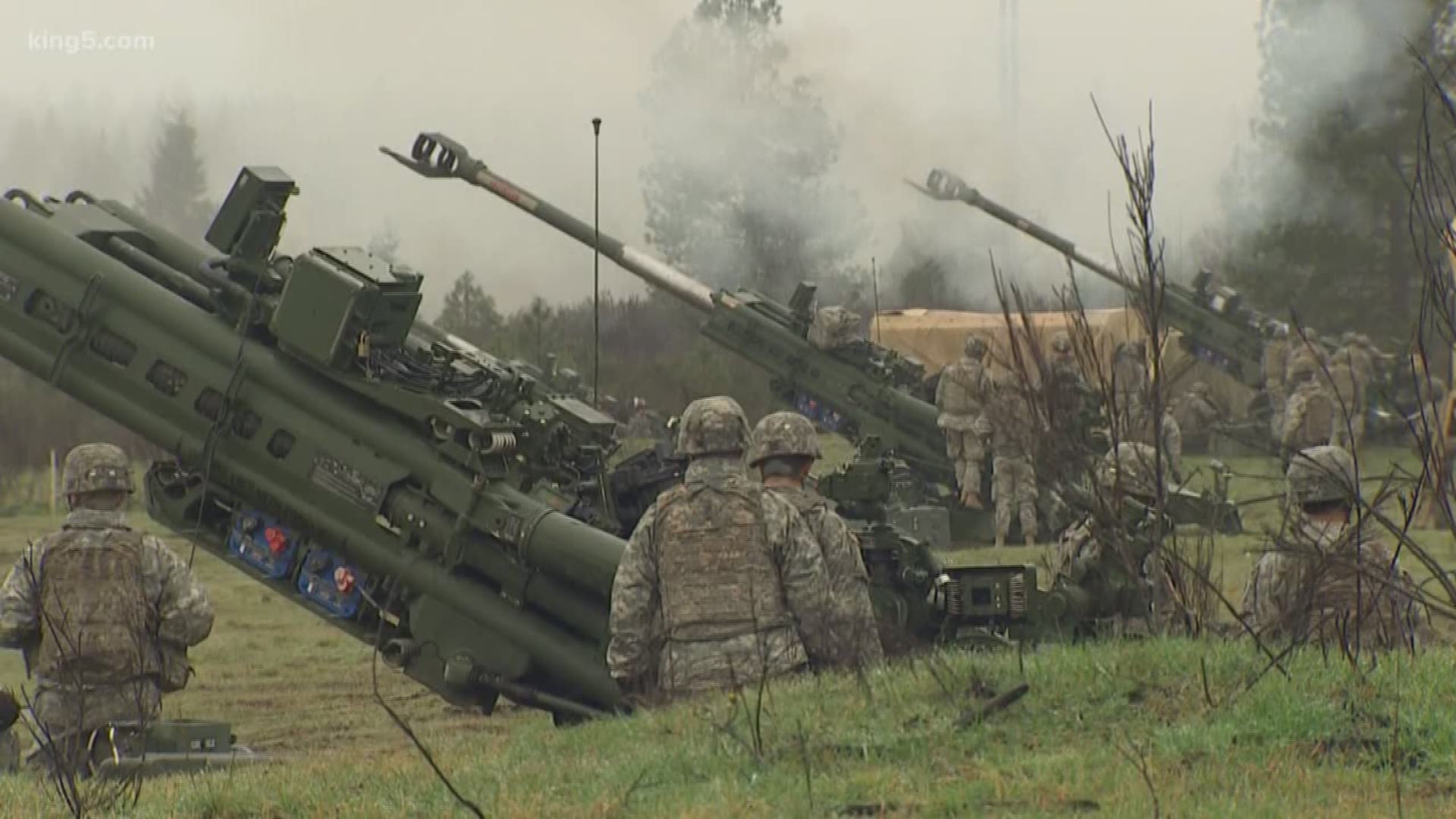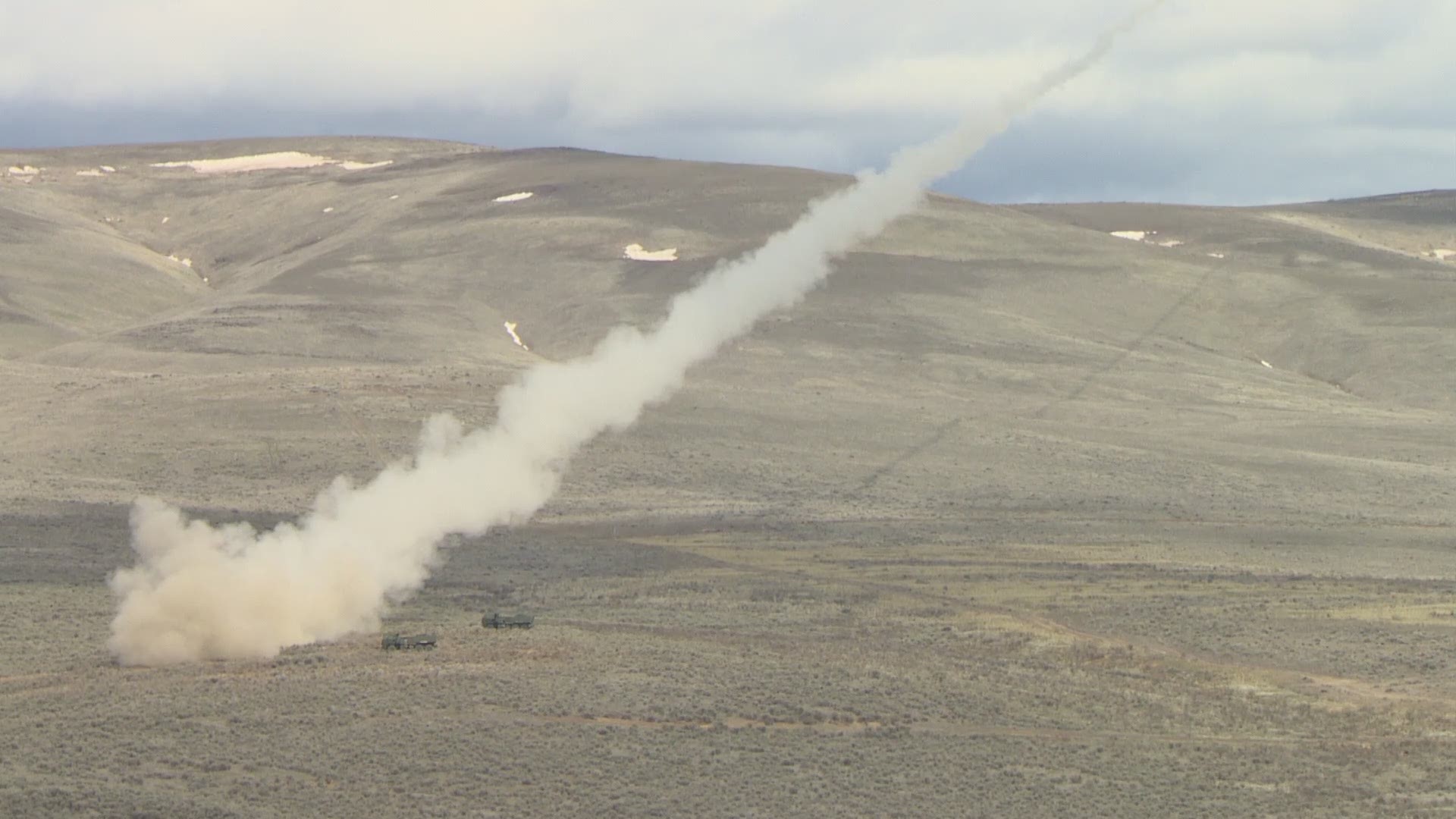From the earliest of battles, enemies have been launching projectiles at one another during warfare – from catapults of the Middle Ages to cannons to modern artillery shells.
Development of a new type of rocket artillery, the Multiple Launch Rocket System (MLRS), began in the mid-1970's and was first delivered in the early 1980’s. However, it wasn't until the first Gulf War that we saw the missiles in action, lighting up the night sky over Kuwait.
Back then, artillery crews operated the M270, a larger, heavier, tracked vehicle, typically outfitted with 12 rockets. While those are still in use around the world, there have been many modifications over the years, both to the rocket system and the vehicles.
Much of what the U.S. Army – and specifically the 17th Field Artillery Brigade at Joint Base Lewis-McChord – operates is a smaller more mobile version with half the rockets, which is called a High Mobility Artillery Rocket System (HIMARS). They first thing you'll notice is a vehicle is on wheels. It's also lighter, faster, and easier to transport than its M270 counterpart.
But the biggest difference from those first rockets of Desert Storm and today is a precision guidance system.
There's a variety of upgraded rockets at their disposal with different armaments depending on the situation. Each is controlled with a state-of-the-art GPS-aided guidance system that allows pinpoint accuracy depending on the range. Maximum targeting distance is around 50 miles. Instead of a six-rocket battery, the HIMARS can also be loaded with a single missile capable of homing in on its opponent from 190 miles away.
“Warfare – just like World War II movies – it’s probably not going to look like that anymore,” said Lieutenant Colonel Martin Wohlgemuth. “It might look like a lot of guys sitting behind computer screens.”
These options can give the U.S. the upper hand in many situations where they need to knock out a target to clear a path for frontline soldiers who don't carry that kind of firepower.
Where things get interesting is when the Army and Air Force combine forces. When you take the firepower of the HIMARS, and you put it on a C-17 cargo aircraft then you have a weapon you can quickly deploy right to the enemy’s doorstep. When you share a base with the 62nd Airlift Wing, the C-17 becomes a tactical taxi of sorts.
The joint effort is called HIMARS Rapid Insertion (HI-RAIN).
“If you could fly that into a remote location and then fire 350 kilometers from there, that’s a strategic capability that the majority of armies in the world, they don’t have,” said Wohlgemuth.
A HI-RAIN mission might take weeks to plan once a target is chosen.
Before any flight, the soldiers weigh in. Then the crew lashes down HIMARS vehicles and move out.
During a real HI-RAIN mission, they would be ready to race off the plane as soon as the cargo bay door opened. Both crews would quickly set up, fire their rockets at the target, race back on the plane and hightail it out of hostile territory before the enemy had a chance to retaliate.
For now, the crews undergo training exercises at the Yakima Training Center.
“Always prepared to deploy and win our nation’s battles,” Wohlgemuth said. “Whenever the nation should call.”


